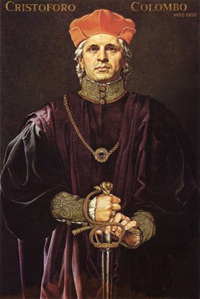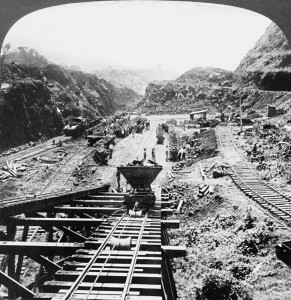Rich land of Panama was inhabited long time ago. Dozens of different Indigenous tribes used to live in this area and it is a known fact that they have contacted nations from South and North America. Local climate isn’t good with preserving archeological treasures, however several found artifacts are dated 3,000 years BC. Until 2,000 BC local people mainly were farmers and later historical data shows that metallurgy began to develop.
 In 1501 first conquistadors stepped onto this land. The first person to discover land of Panama was the Spanish Rodrigo Galvan de Bastidos from Sevilla. A year later Columbus himself came here and founded Santa Maria de Belen settlement right in the delta of Belen River. First Europeans who came here used to call this land Darone, but pronounced as Darien. The province with such name still exists in Panama. Sometime later name Panama came up. The ethimology of still isn’t clear, some say it means “a place rich of fish”, others say it is a type of tree, and finally there is an opinion that the word comes from the time when millions of butterflies appeared and covered the sunlight. The first settlement in Panama was established in 1509 and in 1519 there is a found evidence of first buildings at the place of modern Panama City. At that time the Isthmus had been used for transferring products from Pacific coast to Caribbean and later loading them on the ship to Spain.
In 1501 first conquistadors stepped onto this land. The first person to discover land of Panama was the Spanish Rodrigo Galvan de Bastidos from Sevilla. A year later Columbus himself came here and founded Santa Maria de Belen settlement right in the delta of Belen River. First Europeans who came here used to call this land Darone, but pronounced as Darien. The province with such name still exists in Panama. Sometime later name Panama came up. The ethimology of still isn’t clear, some say it means “a place rich of fish”, others say it is a type of tree, and finally there is an opinion that the word comes from the time when millions of butterflies appeared and covered the sunlight. The first settlement in Panama was established in 1509 and in 1519 there is a found evidence of first buildings at the place of modern Panama City. At that time the Isthmus had been used for transferring products from Pacific coast to Caribbean and later loading them on the ship to Spain.
For hundreds of years Panama was ruled by the Spanish under the Peruan jurisdiction, however in 1718 it became a part of contemporary Colombia from which it received independency only in 1903 and only with help from the US. At those times Panama had become a territory for plantations which widely used labor of slaves brought from Africa. Numerous times Panama suffered from pirate attacks and in 1671 old town of Panama City was almost completely destroyed by infamous Henry Morgan.
 Panama’s beneficial location was drawing attention not only from European kingdoms, at some point USA started showing interest in transporting goods through the Isthmus. This resulted in the agreement with New Granada which gave the US the right for transferring loads toll free. Also US were allowed to build Panama’s first railroad which happened in 1855.
Panama’s beneficial location was drawing attention not only from European kingdoms, at some point USA started showing interest in transporting goods through the Isthmus. This resulted in the agreement with New Granada which gave the US the right for transferring loads toll free. Also US were allowed to build Panama’s first railroad which happened in 1855.
In 1879 the French signed an agreement with Colombia for exploration of the territories where a supposed waterway between the oceans would go. The French engineer Ferdinand de Lessepes founded a company to build the Canal. Right away the shares for the project gained huge popularity and were bought by thousands of people. But major failures in engineering plans of the Canal, local climate and realities of life had built up costs and the budget exceeded twice of the initial amount. The following bankruptcy led to the halt of the whole project. The word “Panama” for a long time became a synonym for a “fraud”.
Meanwhile the US were considering building the Canal in Nicaragua, but happened bankruptcy made the French to consider offer a deal to the Americans. The same year the right for building the Canal was transferred to the Americans. In return they made it possible for Panama to become independent from Colombia and as a “thank you” they were given rights to build and use the Canal as well as the surrounding territories plus certain control over local government. That was true until 1999, when American government under international pressure transferred all the rights for the Canal to Panamanians.
The Canal plus American heritage with their infrastructure and certain expertise in doing business have given Panama incredible possibilities for growth and the county has been booming for last 15 years. Now it is one of the centers of the world trade, tourism, finance, and much more.


